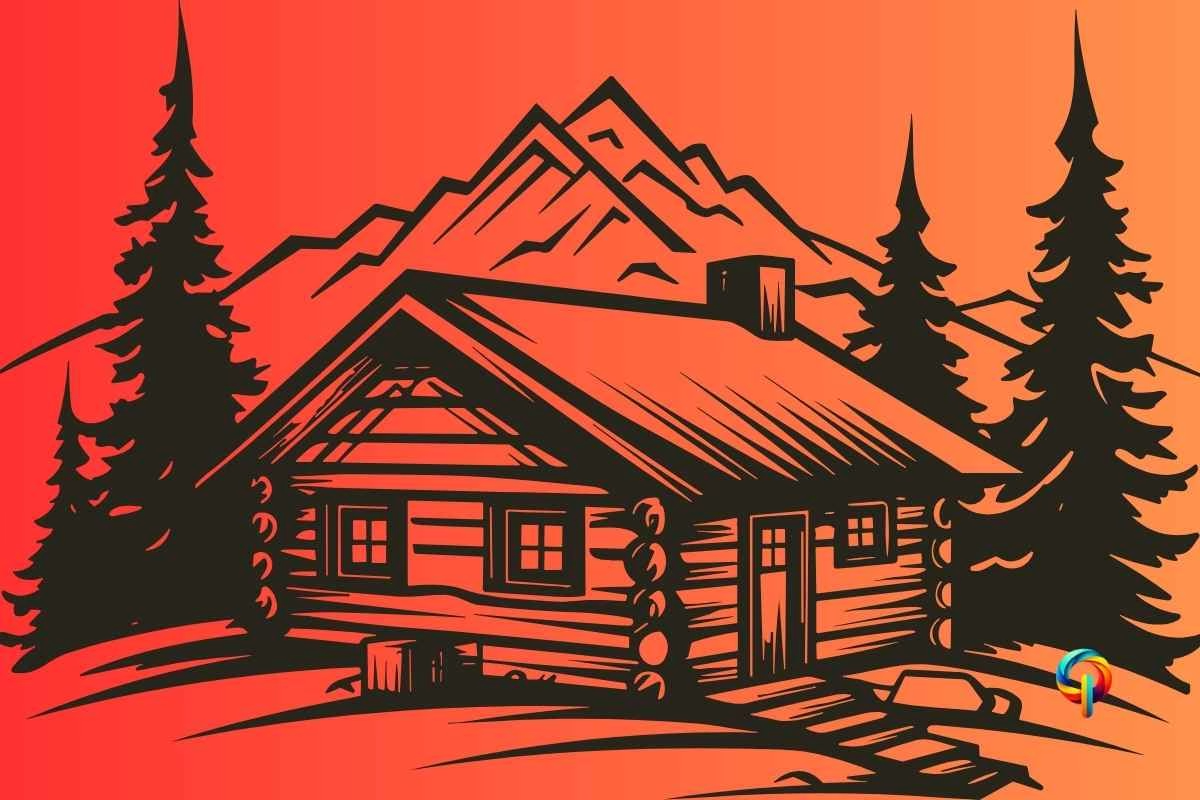
The text explores the history of human shelter, tracing its evolution from prehistoric caves to contemporary smart homes. It examines architectural advancements across various eras, highlighting innovations in materials and design. The narrative covers significant periods like ancient civilizations, the Middle Ages, the Industrial Revolution, and modern times, emphasizing the interplay between societal needs and technological progress. The article concludes by discussing the growing importance of sustainable and smart home technologies in modern shelter design. Finally, it emphasizes the significance of shelter as more than just protection, but also as a reflection of culture and a space that nurtures well-being.
Contents Of The Article
How Has Human Shelter Evolved From Caves to Modern Homes?
The story of human shelter is a fascinating journey that shows how people have worked to create safe and comfortable spaces over time. It all began with early humans finding protection in natural caves to stay safe from wild animals and bad weather. Later, they built simple shelters like huts and tents using materials like wood, mud, and animal skins. These early shelters were easy to move, fitting the lifestyle of people who moved often to find food and survive.
As humans developed societies, shelters became more organized and advanced. Ancient civilizations like the Mesopotamians and Egyptians started building homes that were not just functional but also beautiful. The Greeks introduced balance and harmony in their architecture, while the Romans made buildings stronger and more durable by using concrete. In the Middle Ages, safety became the priority, and people built castles and fortresses to protect themselves from enemies.
The Industrial Revolution changed everything, making homes more accessible and affordable. New materials and mass production methods helped create houses quickly and efficiently. In today’s world, shelters have reached a new level of comfort and innovation. Modern homes now include smart technologies that make life easier and sustainable designs that help protect the environment.
The journey of human shelter—from caves to smart homes—tells the story of human creativity, adaptability, and the constant drive to improve. It shows how shelters have evolved from basic protection to spaces that enhance our quality of life, reflecting our changing needs and dreams.
Human Shelter:
A Journey Through Time
Shelter is one of humanity’s most basic needs, but it’s also so much more. Over thousands of years, our idea of a “home” has evolved, starting with the simple caves of our prehistoric ancestors and growing into the high-tech, sustainable living spaces we have today. Each step in this incredible journey reflects our creativity, resilience, and endless drive for security, comfort, and community.
In this post, we’ll explore the fascinating evolution of human shelter, uncovering how it has shaped—and been shaped by—our history, culture, and technological progress.
A Snapshot Through Time
The story of human shelter is a testament to how we’ve adapted to changing environments and societal needs. From ancient caves to modern skyscrapers, every phase in this evolution reveals something about who we are and how we’ve strived to improve our lives. This journey highlights key innovations, cultural influences, and environmental factors that have shaped the places we call home.
Prehistoric Human Shelter: Caves and Primitive Structures
Caves: Humanity’s First Homes
The story of human shelter begins millions of years ago when early humans found refuge in caves. These natural shelters were some of the first homes, offering protection from bad weather, dangerous animals, and other threats. Caves became a safe place where humans could rest, stay warm, and survive.
But caves were not just for survival—they were also places where early humans expressed their creativity and culture. Inside many caves, archaeologists have found beautiful paintings and tools, giving us a glimpse into how people lived and thought. These ancient artworks and artifacts show us that even in those early days, humans had the instinct to make their shelters meaningful and comforting. Caves were not only homes; they were the beginning of humans learning to create safe spaces in the natural world.
Huts and Tents: Portable Solutions for Nomadic Life
As humans began to move from place to place in search of food and resources, they needed shelters that could be easily carried and set up wherever they went. This led to the invention of simple huts and tents made from materials like tree branches, leaves, and animal skins. These early shelters were light, portable, and perfect for a nomadic lifestyle.
Over time, humans started experimenting with stronger materials like mud, clay, and stones. These materials helped them build more durable and long-lasting shelters. These early efforts marked an important step in human history—learning how to use natural materials to create homes that were both practical and protective.
These simple huts and tents were more than just shelters; they showed how humans could adapt to their environment and solve problems creatively. They laid the foundation for future innovations in housing, as people began to blend practicality, comfort, and durability into their homes.
These early shelters, from caves to portable huts, reveal the start of humanity’s incredible journey of creating homes.
It’s a journey that reflects our ability to adapt, survive, and eventually thrive, shaping the world around us to meet our needs.
Ancient Civilizations and Architectural Advancements in Human Shelter
Mesopotamia: Birthplace of Urban Human Shelter
Around 4000 BC, Mesopotamia, often called the Cradle of Civilization, marked a turning point in the evolution of human shelter. Here, the concept of urban living emerged, with settlers constructing complex buildings using sun-dried mud bricks. These homes featured multiple rooms, courtyards, and public spaces, reflecting a new era of community-oriented living. Architectural innovations like arches and domes made their debut, laying the foundation for future advancements in design.
Mesopotamia’s urban centers represented a shift from nomadic lifestyles to settled communities, fostering social organization, trade, and cultural growth. These developments weren’t just about survival—they signaled humanity’s growing ambition to create spaces that supported collaboration, governance, and the flourishing of early civilizations.
Ancient Egypt: Merging Monumentality with Practicality
In Ancient Egypt, shelter design became a powerful expression of both functionality and grandeur. Everyday homes, constructed from mud bricks, were simple yet effective, often featuring flat roofs to combat the heat. However, it was the monumental architecture—pyramids, temples, and palaces—that truly defined Egyptian innovation.
For wealthier Egyptians, homes included courtyards, gardens, and intricate designs, reflecting their social status and cultural emphasis on family and hospitality. Egyptian architecture balanced practicality with aesthetic and symbolic significance, ensuring that even ordinary shelters reflected the ingenuity and spiritual depth of this ancient civilization.
Greece and Rome: Foundations of Modern Shelter Design
The Greeks and Romans revolutionized architectural principles, shaping the future of human shelter design. Greek homes were typically rectangular, centered around a courtyard, and reflected ideals of symmetry, balance, and harmony. Greek architects emphasized proportion and order, ensuring even modest homes adhered to aesthetic principles that mirrored their philosophy of life.
Building on Greek innovations, the Romans introduced concrete, enabling the construction of larger, more durable structures. Roman homes, or domus, featured multiple rooms, atriums, and open spaces that blended practicality with opulence. From communal areas to intricate mosaics and decorative elements, Roman shelters showcased advanced engineering skills and a commitment to comfort and beauty.
These ancient civilizations didn’t just provide shelter—they laid the groundwork for architectural practices that continue to influence contemporary housing design.
Medieval and Renaissance Human Shelter: Castles and Manors
Medieval Europe: Fortified Human Shelters
The Middle Ages brought a shift in shelter design, with security becoming a top priority. Fortified structures like castles and manors emerged as the quintessential shelters of the era. Castles, with their thick stone walls, moats, and drawbridges, served dual purposes—they were both homes and fortresses. Their imposing designs reflected the warlike nature of the time and the constant need for defense.
Beyond being places of residence, castles symbolized power and authority, standing as strongholds of protection for both the nobility and nearby communities during conflicts. On the other hand, manors, while less heavily fortified, were designed with security in mind and served as the administrative hubs of vast agricultural estates. These structures underscored the feudal hierarchy, providing safety and sustenance for those who lived under the lord’s protection.
Renaissance: The Rebirth of Classical Shelter Design
The Renaissance marked a glorious revival of classical architectural principles, drawing inspiration from the symmetry, balance, and grandeur of ancient Greece and Rome. Grand villas and palaces of this era were characterized by proportionate designs, majestic columns, and elegant arches.
Renaissance shelter design extended beyond mere functionality to create a seamless unity between interior and exterior spaces. Gardens, courtyards, and terraces became integral parts of home layouts, emphasizing harmony with nature. Artistic elements, such as frescoes, sculptures, and intricate facades, adorned these homes, transforming them into masterpieces of beauty and sophistication.
This era wasn’t just about constructing shelters—it was about elevating living spaces into reflections of culture, intellect, and artistic expression. Renaissance homes showcased the human desire to blend utility with elegance, leaving a lasting legacy in the world of architecture.
Early Modern Era: Industrial Revolution and Urbanization of Human Shelter
Industrial Revolution: Mass Production and Urban Growth in Human Shelter
The 18th and 19th centuries brought sweeping changes to human shelter, largely driven by the Industrial Revolution. As urbanization accelerated, cities became hubs of economic activity, attracting large populations in search of work and opportunity. This rapid influx of people led to the creation of densely packed housing for laborers—often cramped, poorly constructed, and lacking basic sanitation. These living conditions starkly highlighted the social and economic disparities of the time.
Amid these challenges, the Industrial Revolution also ushered in significant advancements in construction. Innovations in building materials, such as steel and reinforced concrete, and the development of standardized techniques made it possible to produce housing on a massive scale. This shift enabled the creation of more affordable and uniform homes, particularly for the growing middle class.
Urban living became the norm for many, with entire neighborhoods springing up to accommodate the booming populations. While factory workers lived in tightly packed row houses or tenements, middle-class families enjoyed more spacious suburban homes, thanks to improved transportation networks. This era marked a pivotal transition in human shelter—from traditional, handcrafted structures to modern, mass-produced housing that catered to the demands of an industrialized society.
Despite its flaws, the Industrial Revolution laid the groundwork for modern urban architecture, setting the stage for innovation and better living standards in the centuries to follow.
Victorian Age: Ornate and Eclectic shelter design for humans.
Victorian shelter design, spanning from the mid-19th to early 20th centuries, stands out as one of the most ornate and eclectic periods in architectural history. These multi-story homes, often adorned with intricate woodwork, bay windows, and spacious porches, were a visual representation of the wealth, ambition, and cultural aspirations of their inhabitants.
What made Victorian homes unique was their embrace of a diverse range of architectural styles. From the dramatic pointed arches of Gothic Revival to the asymmetrical charm of Queen Anne homes, Victorian architecture reflected a bold fusion of historical influences. Each design was a statement, showcasing an appreciation for detail and an almost theatrical sense of beauty.
Elaborate embellishments—such as decorative spindles, ornate cornices, and stained-glass windows—were common features, transforming these homes into works of art. The interiors were equally lavish, with high ceilings, carved moldings, and opulent wallpapers contributing to an air of grandeur.
This era of shelter design wasn’t just about aesthetics; it was also deeply tied to societal values. For the rising middle and upper classes, these homes symbolized success and refinement. The meticulous attention to detail and architectural experimentation of Victorian homes continue to captivate modern-day architects and enthusiasts, serving as a timeless reminder of an age where elegance and diversity shaped the concept of human shelter.
20th Century: Modernism and Suburbanization of Human Shelter
Modernism: Simplicity and Functionality in Human Shelter
The 20th century ushered in the modernist movement, redefining the concept of human shelter with an emphasis on simplicity, functionality, and innovative materials.
Architects like Le Corbusier and Frank Lloyd Wright led this transformation, challenging traditional architectural norms with groundbreaking designs that prioritized efficiency and practicality.
Modernist homes stood in stark contrast to the ornate and elaborate styles of previous eras. With their clean lines, flat roofs, open floor plans, and large windows, these structures embraced minimalism while making optimal use of space and natural light. Gone were the intricate embellishments and decorative facades; instead, modernist architecture focused on creating streamlined, uncluttered spaces that catered to the needs of contemporary living.
The movement also embraced new materials and construction techniques. Steel, glass, and reinforced concrete became hallmarks of modernist design, enabling architects to experiment with bold, open layouts and innovative structural forms. This shift wasn’t just about aesthetics—it was about rethinking shelter as a functional, adaptable space that could meet the demands of an evolving society.
By prioritizing simplicity and efficiency, modernist architecture revolutionized how we view and build homes. Its legacy continues to influence contemporary design, emphasizing that beauty and functionality can coexist seamlessly in human shelter.
Post-War Suburbanization: The American Dream of Human Shelter.
After World War II, a new era of human shelter emerged, characterized by the rapid growth of suburban communities, especially in the United States. This transformation was fueled by the rise of the automobile, making it easier for people to live farther from city centers, and the widespread availability of government-backed housing loans, such as those provided by the GI Bill. These factors combined to create a housing boom that defined the American dream.
Suburban homes were typically single-family houses, complete with yards, picket fences, and garages. They symbolized comfort, stability, and the growing emphasis on family life. These neighborhoods were designed to cater to the nuclear family, offering privacy and a sense of community that appealed to a population eager to leave behind the uncertainties of wartime.
Suburbanization also marked a cultural shift, emphasizing homeownership as a key indicator of success and security. It reflected the economic prosperity of the post-war period, as well as a collective desire for normalcy and permanence after years of upheaval. Suburban homes weren’t just shelters—they were embodiments of a lifestyle centered on convenience, family values, and upward mobility.
The post-war suburban boom transformed the way people lived, shaping a modern housing model that continues to influence urban planning and residential architecture today. It marked a pivotal moment in the evolution of human shelter, blending affordability, practicality, and the pursuit of the good life.
Contemporary shelter design for humans: Sustainable and Smart Homes
Sustainable Design in Human Shelter: Green and Smart Buildings
In recent years, the approach to designing human shelters has shifted dramatically, with sustainability and energy efficiency taking center stage. No longer are homes viewed merely as structures for living—they are now seen as opportunities to harmonize with the environment. Modern building standards are evolving rapidly, embedding eco-friendly practices like using renewable materials such as bamboo or reclaimed wood, installing solar panels to harness clean energy, and integrating advanced insulation techniques to minimize energy loss.
The overarching goal of these innovations is to create shelters that tread lightly on the planet while providing spaces that are both healthy and comfortable for occupants. Concepts like passive house design have emerged as game-changers, focusing on airtight construction and efficient ventilation systems to achieve superior energy conservation without sacrificing comfort.
This growing focus on sustainable housing is a direct response to pressing environmental concerns and the collective realization that traditional construction methods are no longer viable in a world facing climate challenges. By embracing green building practices, we’re crafting homes that don’t just serve our immediate needs but also contribute to a healthier, more sustainable future. These homes are designed to be energy-efficient, environmentally responsible, and resource-conscious throughout their entire lifecycle—an approach that benefits not just individuals but the planet as a whole.
Smart Homes: Technology and Connectivity in Human Shelter
The advent of smart technology has redefined how we experience and interact with our living spaces, ushering in a new era of connected, intelligent shelter design. Today’s smart homes go far beyond traditional functionality, integrating cutting-edge devices and systems that can be controlled remotely, offering seamless operation of lighting, heating, cooling, and even security features—all at the touch of a button or through voice commands.
These technologies are not just about convenience; they’re about creating a living environment that adapts to your lifestyle, preferences, and needs in real time. Imagine lights that dim automatically as the evening sets in, thermostats that adjust the temperature based on your habits, or security cameras that notify you instantly when someone approaches your door. Through integration with the Internet of Things (IoT), these systems communicate and work together, offering a holistic and intelligent domestic experience.
Smart homes also emphasize sustainability and energy efficiency. Automated lighting and appliances reduce energy wastage, while intelligent climate control systems ensure you’re never using more power than necessary. This combination of advanced convenience and eco-consciousness makes smart homes an essential step forward in shelter design.
As technology continues to evolve, smart homes are becoming increasingly intuitive, blending seamlessly into daily life. From personalized schedules for appliances to enhanced security measures, these innovations are transforming the very concept of “home.” No longer just a place to live, a smart home becomes an active participant in your life, offering adaptability, efficiency, and comfort like never before.
Frequently Asked Questions: Human Shelter
What is human shelter?
Human shelter is a place where people live and feel safe. It provides protection from weather, predators, and natural disasters. Shelters can be as simple as a hut or as advanced as a modern house with smart technology. A shelter isn’t just about safety; it’s also about having a comfortable space to relax, connect with others, and grow.
How has human shelter evolved over time?
The way humans build shelters has changed a lot over time. In the past, early humans lived in caves or used trees for safety. Later, they built huts with mud, wood, and animal skins. When farming began, people started living in permanent houses made of stone or clay. Today, we live in homes made with strong materials like concrete and steel. Some houses even have smart technology that makes life easier. Each step in this evolution shows how humans have adapted to their needs.
What are the benefits of modern shelters?
Modern shelters offer comfort, safety, and convenience. They often include smart systems that let you control lights, temperature, and security with your phone or voice. Modern homes are also built to save energy, using appliances that consume less electricity. They look attractive, are durable, and can include features like soundproof walls or better air circulation. Most importantly, modern shelters can be designed to use fewer resources, making them eco-friendly.
What challenges does human shelter face today?
Shelters today face problems like being too expensive for many people or being in short supply in crowded cities. Urbanization is increasing demand for homes, and this raises prices. Many homes also take a toll on the environment, using materials and methods that create pollution. Solving these challenges means creating affordable housing, using materials that don’t harm nature, and making sure everyone can find a safe place to live.
What are the latest trends in shelter design?
Today’s shelters are becoming smarter and greener. Trends include smart homes, where you can control things like lights and locks with your phone. Modular homes, which are built in pieces at a factory and assembled on-site, are popular because they are fast to build and cost less. Sustainable designs are also in demand, with homes using solar panels, rainwater harvesting systems, and natural materials to help the environment.
How does shelter reflect cultural identity?
Shelters show a lot about a community’s culture and traditions. For example, Japanese houses often use natural materials and have sliding doors that connect indoor and outdoor spaces. Mediterranean homes focus on open spaces and bright light. Indigenous homes, like igloos or yurts, reflect how people adapted to their environments. Even modern homes often include cultural influences, mixing tradition with modern styles.
What is the future of human shelter?
The future of shelter is exciting and focused on sustainability. Homes are becoming smarter with technology like artificial intelligence (AI) and the Internet of Things (IoT). Vertical cities, where homes are stacked in tall buildings to save space, are being developed. 3D-printed homes may soon make housing cheaper and faster to build. These advancements aim to create homes that are affordable, eco-friendly, and adaptable to changing needs.
What were the earliest forms of human shelter?
The first shelters were natural, like caves and rock overhangs. Early humans also used tree branches or animal hides to make simple huts. These shelters provided basic protection from weather and predators. As humans learned to use tools, they began creating more sturdy structures, showing how even our ancestors worked to improve their living conditions.
How did agriculture influence the development of human shelter?
Agriculture changed everything. When people started farming, they stayed in one place to take care of crops and animals. This led to permanent homes and villages. These houses were often made of clay, wood, or stone. Over time, farming communities grew into towns and cities, and homes became more advanced. This shift marked the beginning of urban living.
What role does technology play in modern shelters?
Technology makes modern shelters more comfortable, safe, and efficient. Smart homes let you control lights, locks, and even appliances with your phone or voice. Solar panels and energy-saving devices help lower electricity bills and reduce pollution. New construction methods, like 3D printing, make building homes faster and cheaper. Technology is also helping us create homes that are more in tune with nature.
How does sustainable housing benefit the environment?
Sustainable housing helps the planet by using fewer natural resources and creating less pollution. Homes can be built with materials like bamboo or recycled wood, which are eco-friendly. Solar panels and wind turbines provide clean energy, while water-saving systems reduce waste. These features make homes more environmentally friendly and save money in the long term.
What are modular homes, and why are they gaining popularity?
Modular homes are houses built in sections at a factory and then put together on-site. They are popular because they’re quick to build and cost less than traditional homes. Modular homes can also be customized to suit your needs and are often designed to be energy-efficient. Their eco-friendly and affordable nature makes them a great option for many people.
How can we address the global housing crisis?
Solving the housing crisis means building affordable, safe, and eco-friendly homes for everyone. Governments and organizations need to work together to create policies that support affordable housing. Using modular construction and sustainable materials can make homes cheaper and faster to build. Renewable energy systems like solar panels can reduce costs for homeowners. Education and awareness are also essential to ensure people know about the resources available to help them find safe shelter.
The Journey of Shelter: From Survival to Sustainability
The evolution of human shelter shows how creative and strong we are, always finding better ways to live. From simple caves to high-tech modern homes, each step in this journey shows how humans adapt and improve as their needs and challenges change. Shelters have gone from basic protection against weather and danger to comfortable and secure spaces designed for a better way of living.
By looking at the history of shelters, we can see the many amazing ideas that have shaped how we live today. In ancient times, people used natural materials like wood, mud, and stone to build homes. Over the years, new methods and materials have made homes stronger, safer, and more efficient. Today, we even use advanced technology to make our homes smarter, helping us save energy and live more comfortably. This history reminds us that shelters are not just about having walls and a roof—they’re about creating a space where we feel safe, connected, and happy.
As we imagine the future of shelters, the possibilities become even more exciting. Builders and designers are now focusing on eco-friendly practices, smart technology, and designs that work with nature instead of against it. Homes are becoming more energy-efficient, using less power while staying comfortable. They are also being designed to adapt to changes in the environment or lifestyle needs. These innovations bring us closer to a future where our homes do more than just protect us—they improve our lives and help us take care of the planet.
The story of human shelter, with its mix of rich history and new technology, shows us the incredible progress we’ve made and the bright future ahead. Homes are no longer just places to live—they are spaces that improve our well-being and help us live in harmony with the world around us.
This journey of shelter is a true example of human creativity and the desire to make life better.





